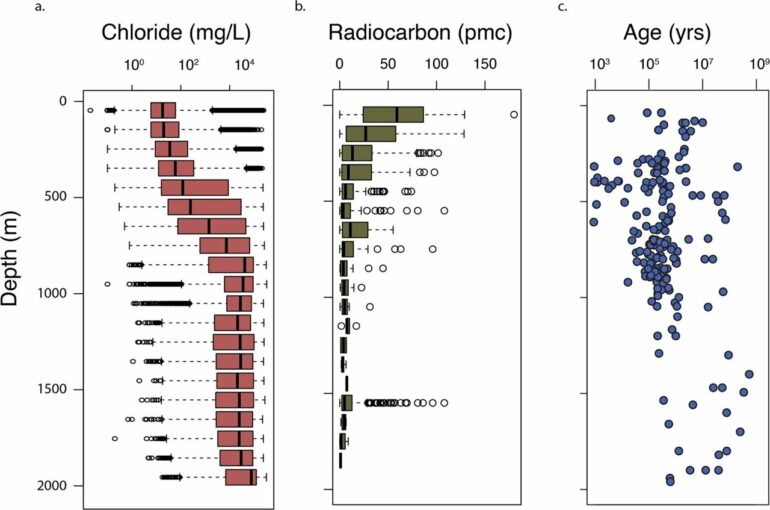New research out of the University of Saskatchewan (USask)’s Global Institute for Water Security (GIWS) is calling on hydrological researchers to reconceptualize the Earth’s water cycle.
Lead author on the paper, Dr. Grant Ferguson (Ph.D.), with USask’s College of Engineering, says that in hydrological research, there’s been an important push in the past few decades to recognize groundwater and surface water as a single resource. This has had a big impact on water management policy as you wouldn’t want to drill a well right next to a river without recognizing that the river was fed at least in part from groundwater.
But Ferguson’s new research suggests all groundwater isn’t created equal. Their paper published in Communications Earth & Environment found that while groundwater is never completely separate from surface water, there are depths at which the groundwater is only weakly connected to the rest of the hydrological cycle.
In some models, Ferguson says researchers have somewhat arbitrarily set the level at which the groundwater no longer interacts with the surface water. This research tries to put a more precise number on what depth that might be at.
“Some of the water down there is still … connected to the rest of the hydrologic cycle, but it might take centuries to millennia for those to pop back up and seep into some river somewhere,” said Ferguson.
Co-author Dr. Jeffrey McDonnell (Ph.D.), a professor with the USask School of Environment and Sustainability, says this research could help change the water cycle diagrams we all see in middle school and high school in Canada.
“Rather than the rhythmic flow of water into and out of the ground, these updated diagrams will include the findings from this and other work, showing just how much water is ‘stuck’ underground and effectively cut off from the global water cycle,” he said. “This is very different to how the cycle is currently portrayed where all that enters the ground ultimately returns to the rivers and oceans.”
It has been estimated that there is 44 million cubic kilometers of groundwater on the planet, and previous research has estimated that two thirds of that is more than 12,000 years old. As a comparison, some surface water is less than three months old.
“These mysteries of why the water stored in the ground is so old when the river water is so young, are partly explained by these new findings,” said McDonnell.
Modeling these systems is the focus of much hydrological research, and Ferguson said these findings could help to make those models more accurate.
The real-world implications of the research also can’t be overlooked, with both Ferguson and McDonnell noting the research could change our understanding of groundwater contamination and its link to surface water.
“It’s important to establish whether groundwater is isolated or not,” Ferguson said, “because if we want to store nuclear waste, sequester CO2 or for production and storage of both conventional and emerging energy sources, we need to know how these systems are connected to the rest of the hydrologic cycle.”
More information:
Grant Ferguson et al, Groundwater deeper than 500 m contributes less than 0.1% of global river discharge, Communications Earth & Environment (2023). DOI: 10.1038/s43247-023-00697-6
Provided by
University of Saskatchewan
Citation:
Rethinking the global water cycle: Research examines mystery behind ancient groundwater (2023, March 17)



